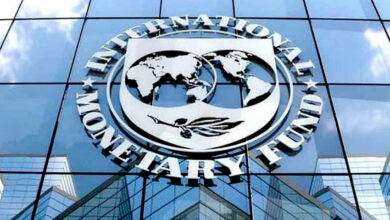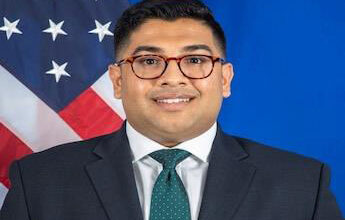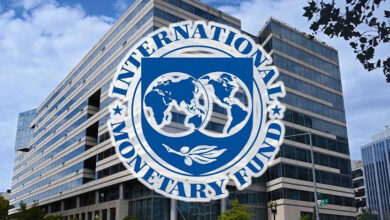MODI & HIS Fabulous Five

Following the 17th national elections, with a new government taking office, a group of six persons, Prime Minister Narendra Modi, his four top ministers and the National Security Advisor, has emerged, like the icing on the Indian cake.
While Modi needs no introduction, this group constituting the Cabinet Committee on Security (CCS), has new faces tasked with new roles. Undoubtedly, this is the most powerful body that governs India when it comes to national security and foreign relations.
It is a given that India’s is a democracy with a cabinet system wherein the Prime Minister and his/her Council of Ministers are answerable to the parliament they are elected to. What is less known, or talked about, is how various Committees take collective decisions covering the entire range of issues and institutions that impact the whole country.
The Committee system for the executive is prescribed by the Constitution and is yet flexible in its working. It functions under the Government of India Transaction of
Business Rules, 1961. These Rules emerge out of Article 77(3) of the Constitution, which states: “The President shall make rules for the more convenient transaction of the business of the Government of India, and for the allocation among Ministers of the said business.”

Each department is supposed to take its decisions at the earliest. However, there has got to be collective and coordinated functioning “when the subject of a case concerns more than one department”, no decision can be taken “until all such departments have concurred, or, failing such concurrence, a decision thereon has been taken by or under the authority of the Cabinet”.
The other given is that forming of these committees is the prerogative of none else but the prime minister and he/she may choose to chair one or more of these committees. Once the Council of Ministers was formed, the government announced composition of eight committees, two of them new. Cabinet Committee on Investment and Cabinet Committee on Employment were formed for tasks as indicated in their nomenclature. Both are aimed at augmenting jobs.
The six reconstituted include the all-important Cabinet Committee on Appointments(CCA) that decides just about all top positions, on Economic Affairs and one on Political Affairs, taking decisions, respectively, on the economy and political issues like those pertaining to Centre-State relations. They are manned by ministers who head the concerned departments.
The common task is to have proposals processed by the concerned department, which takes much time and effort and finally, to save time, put it before the committee and go in for collective decisions.

In view of the complexity of the tasks involved, Prime Minister Manmohan Singh’s government had formed several Group of Ministers (GOMs) and also some Empowered Group of Ministers (EGOMs). They were meant to iron out differences on issues within the government.
The Modi.01 ended this system and no differences among ministers/members were known to have surfaced. Given parliamentary majority, greater coherence and Modi’s style of functioning, the Committees are expected to work without sub-bodies and with greater coherence.
Of all the committees, besides the one on Appointments, the CCS assumes equal, if not more, importance in the national firmament and dealings with the world outside. With the prime minister in the chair, its members, ex-officio, are the Home Minister, the Defence Minister, the Finance Minister and the Minister of External Affairs.
New member of the reconstituted CCS is the National Security Advisor (NSA). Mr Ajit Doval who served the Modi Government (2014-19) and was a special invitee, has now been given the full cabinet status and becomes the fifth member of the elite group.
It is interesting to look at each of them. Besides Mr Modi, Mr Rajnath Singh continues from the previous government. He retains the Number Two position after Modi as per protocol, but has moved from Home to Defence.

A year younger than Modi, Rajnath Singh is a former physics teacher who joined politics. He was Chief Minister of Uttar Pradesh when his party lost.
He was in charge of Agriculture in the Atal Bihari Vajpayee Government.
As Bharatiya Janata Party (BJP) President, the affable Singh was known to have fully endorsed the advent of Modi, then chief minister of Gujarat, to the national centre-stage and be anointed the prime ministerial candidate in 2013.
Modi’s political Man Friday, also the current BJP chief, however, is Amit Shah. Called the modern-day ‘Chanakya’, he is credited with pushing Modi’s and the party’s political and electoral sway across the country. The two have worked in tandem since 1987 and his rise in the new government was foregone.
Shah, who had been minister for Home and Law in Modi-led Gujarat Government is, however, a debutante in the federal government. Elected last year to Rajya Sabha, the parliament’s upper house, he has won his Lok Sabha seat for the first time. Shah is the Home Minister and is on six of the eight committees.
Shah is a science graduate who began as a stock broker before joining his affluent family’s business dealing in PVC pipes in Mumbai. But all along, he was in politics, becoming a legislator in Gujarat at 31. Proximity to Modi earned him both bouquets and brickbats and with him, he arrived on the national scene as the BJP chief.

The new CCS does not have Arun Jaitley, the ailing Finance Minister in Modi.01 who opted out on health grounds and Sushma Swaraj, External Affairs Minister in the previous government. Ms Swaraj had also been unwell and had announced that she would not contest an election.
Replacing Jaitley in the government as the Finance Minister and on the CCS is Nirmala Sitharaman. She crashed the glass ceiling when Modi appointed her the Defence Minister, the first woman to hold that job, dealing essentially with the macho men in uniform. Indeed, Sitharaman and Swaraj, the two formidable women occupying the central chairs with men flanking them was a rare photo-sight of the Modi Government that would make India proud, to the envy of other democracies.
Having ceremonially flown combat jets and visited soldiers at the Himalayan heights, Sitharaman is now into crunching statistics and managing the economy. Her only peer for the two posts has been Indira Gandhi, the prime minister, who held them briefly on different junctures.
Nirmala studied economics right through school to post-graduation at the Jawaharlal Nehru University (JNU). She could not complete her doctorate in economics (Indo-Europe trade) because she moved with her husband who pursued further studies at the London School of Economics.
For a southerner who grew up in Tamil Nadu and married another southerner from Andhra Pradesh, Sitharaman was the BJP’s spokesperson who spoke fluent Hindi, to the surprise and awe of the media. She has been a polyglot and showed it in her parliamentary craft handling sensitive debates like the ones on Rafale aircraft deal controversy.
Swaraj’s successor on the CCS is Dr Subrahmanyam Jaishankar, the new External Affairs Minister. His surprise inclusion at the cabinet level in the government means that within six months, he would have to get elected to one of the two Houses of Parliament.
He is a JNU alumni like Sitharaman, having specialised in international relations. He is also a polyglot like her, comfortable with English, Mandarin, Russian, Hungarian and a few other languages.
Jaishankar retired as the Foreign Secretary only last year, from a position that Modi brought to him even at the cost of removing the incumbent, Ms Sujata Singh. It is said that Modi had wanted him to take up a slot in the previous government itself, but he did not wish to take a junior position as a minister of state and opted for a
corporate job as the Director of Global Affairs at the Tata Group.
Modi has placed his confidence and faith in Jaishankar who has been envoy to the United States and the longest-serving ambassador (four and a half years) to China. As one who negotiated the Indo-US civil nuclear deal, even when he was the High Commissioner in Singapore, and one who piloted the Foreign Office during the India-China confrontation on the Doklam plateau in Bhutan, Jaishanakar is at once the America and China hand.
Jaishankar is essentially chip of the old block, being son of the late K. Subrahmanyam, the doyen of India’s community of national security experts. The father would have approved the way the son handled things in and with Beijing and Washington.
A sample of how Jaishankar’s elevation as the first foreign secretary to become a cabinet minister in charge of the department of which he was a part not long ago, can be had from the responses of the foreign diplomats and officials he has dealt with.
“I am thrilled to see Jaishankar take on the role of Minister of External Affairs. He is a seasoned and skilled diplomat, and his depth of experience as a global strategist has made him a key figure in the development of India’s foreign policy,” Nisha Desai Biswal, who served as the Assistant Secretary of State for South and
Central Asia in the previous Obama Administration, has said.
Biswal, who is now president of US India Business Council, was Obama administration’s point person for South and Central Asia when Jaishankar arrived Washington DC in
December 2013, amidst the bilateral crisis following the arrest of senior Indian diplomat Devyani Khobragade in New York. In the next few days, Biswal and Jaishankar worked together to resolve the crisis.
“He commands great respect around the world and particularly in the US for his role in strengthening the bilateral relationship. I am confident that US-India ties will be enhanced as a result of this appointment,” said Biswal.
Jaishankar “is one of the world’s best diplomats,” Richard Verma, the former US Ambassador to India has said. “He knows the details of complex issues,” said Verma, who was stationed in New Delhi from January 2015 to January 2017.
“He’s a tough negotiator, but yet exceptionally fair and he knows how to get a deal done. He knows the USIndia relationship and the India-China set of issues better than anyone,” said Verma who thinks: “This is an inspired choice by the Prime Minister.
“Jai’s selection as EAM could not have come at a better time as far as I am concerned for three reasons: he thinks strategically about India’s interests in a way that few do, excepting the prime minister and the NSA; he will be able to manage both the MEA and other GOI bureaucracies better than most because he has come up from within their ranks; and last, and perhaps most importantly, the PM trusts him in ways that will allow him to implement Indian foreign policy without him having to constantly look over his shoulder,” says Dr Ashley Tellis who is with the Carnegie Endowment.
Lastly, Doval, the NSA, being born in 1945, is the oldest member of the CCS. An Indian Police Service (IPS) officer, he earned his spurs through various counter insurgency operations before becoming the Intelligence Bureau (IB) chief.
He was one of three who negotiated the release of passengers Of Indian civilian aircraft hijacked to Kandahar in 1999. Wikipedia says that uniquely, he has the experience of being involved in the termination of all 15 hijackings of Indian Airlines aircraft from 1971– 1999.
Doval’s position, unchanged and indeed, elevated, allows for continuity in Modi Government’s handling of sensitive issues within the country and with neighbours, with a tough line on Pakistan.
And finally, Doval is the only one in the CCS posing a ‘challenge’ to Modi, in a manner of speaking. While a movie on the prime minister’s life and work is running in theatres across India, Doval has already been portrayed as what he is and doing in blockbuster, ‘Uri.’
If nothing else, Modi will have to ensure an unending supply of mobile telephones to Doval, the way his movie character smashed them after taking each crucial decision.





